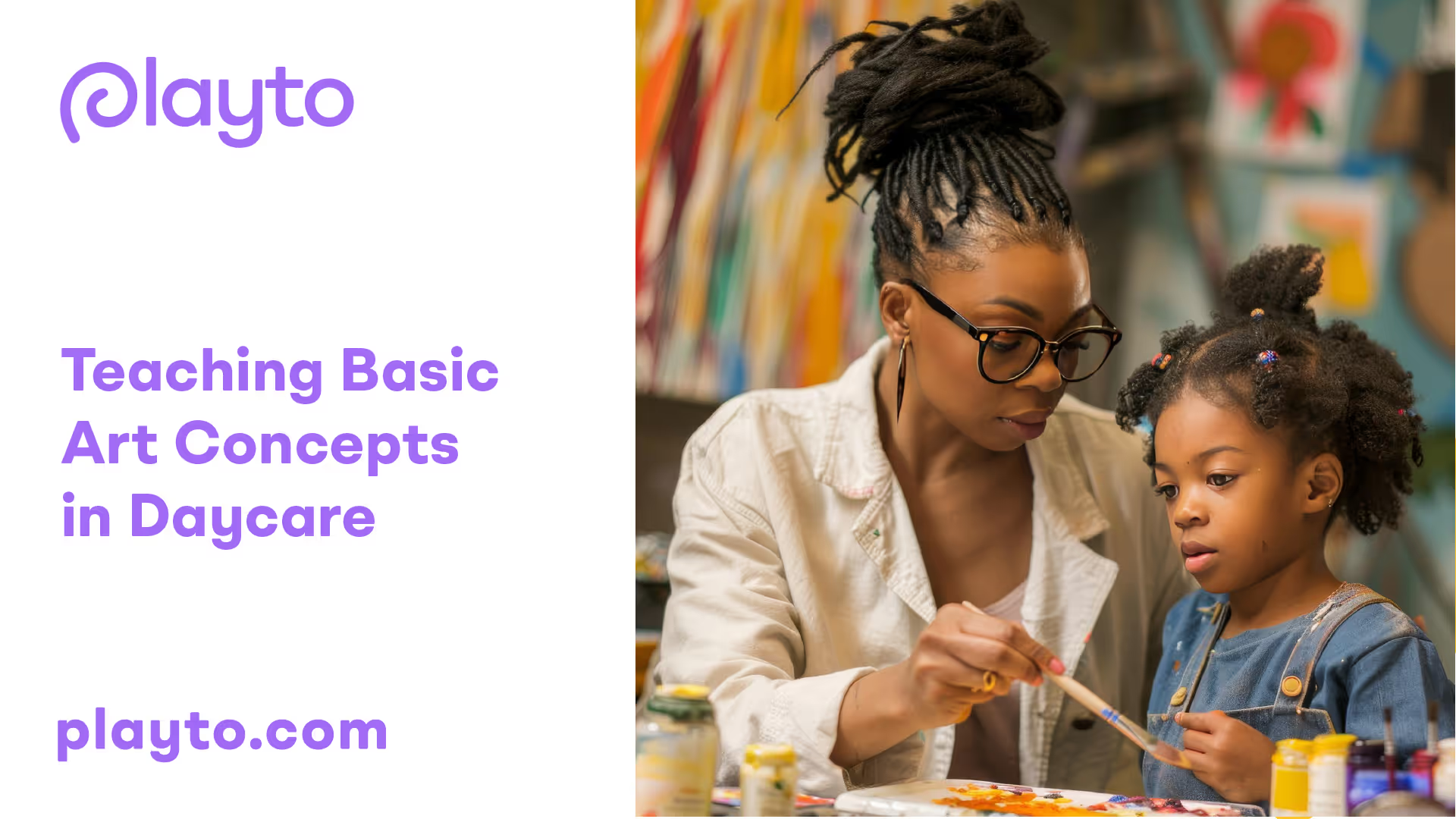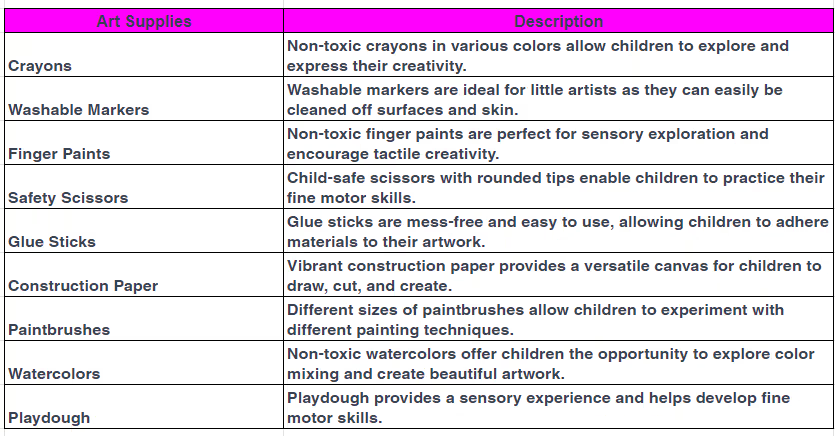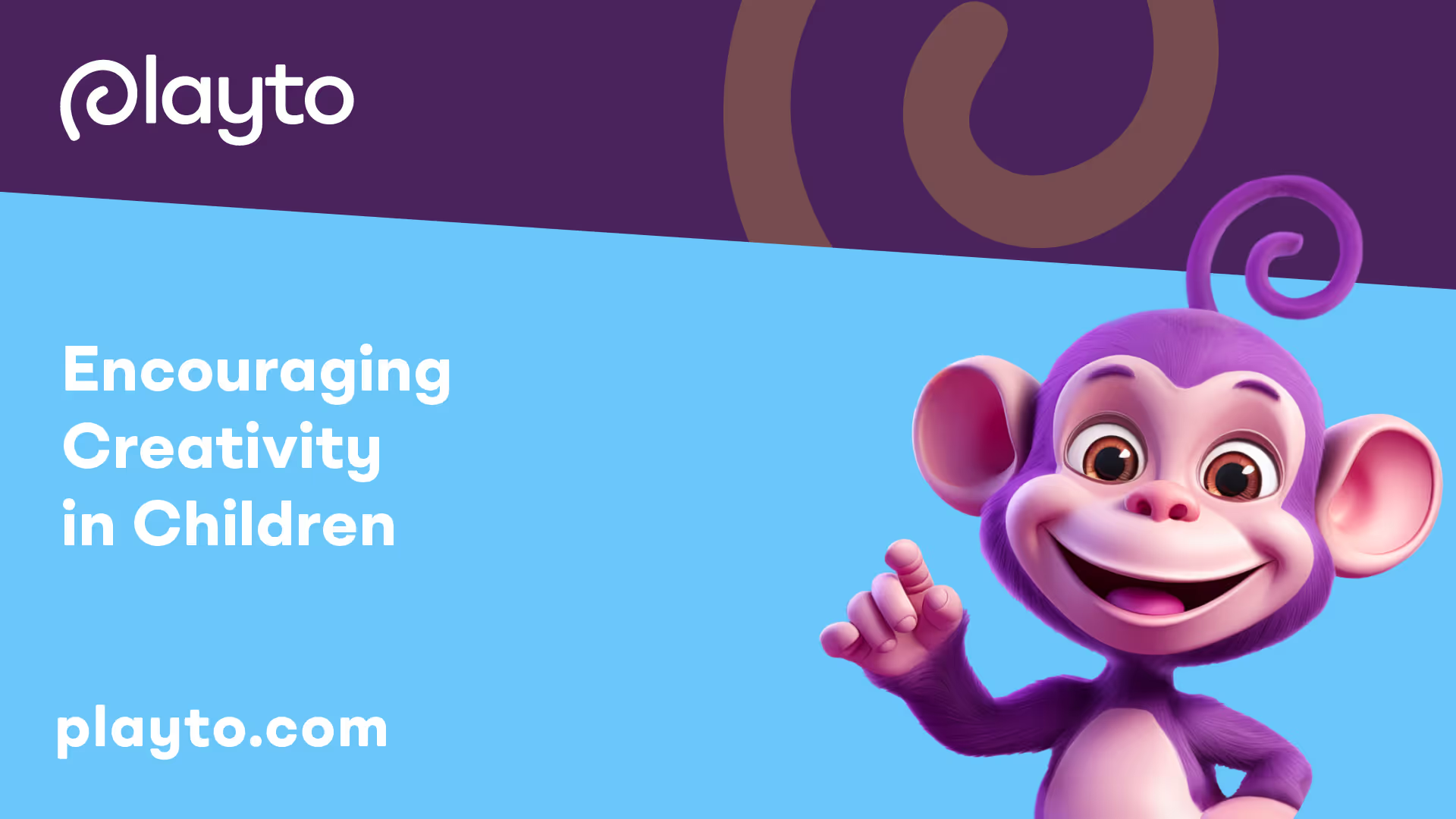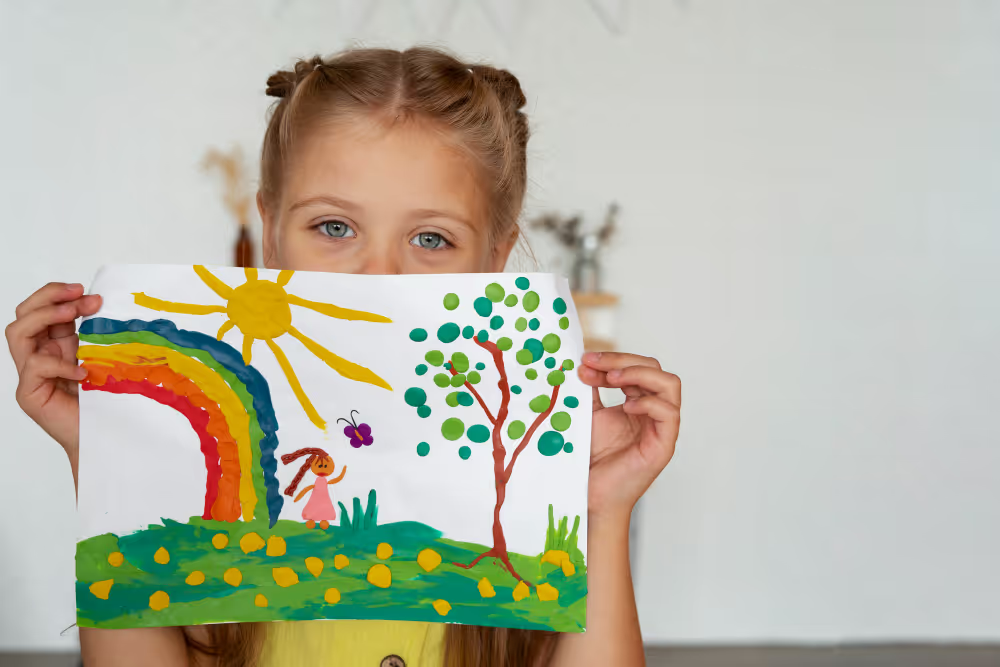Importance of Art in Daycare
Art plays a vital role in early childhood education, including in daycare settings. It not only provides children with a creative outlet but also offers numerous benefits for their development. Understanding the importance of art education and its impact on developmental milestones is essential for creating a well-rounded daycare curriculum.

Benefits of Art Education
Art education in daycare settings brings forth a multitude of benefits for children. According to Brown (2019), engaging in art activities promotes the development of fine motor skills, hand-eye coordination, and spatial awareness. Through art, children learn to manipulate various art materials, such as crayons, paintbrushes, and scissors, which enhances their dexterity and control.
Furthermore, art education fosters creativity and imagination. Smith (2020) notes that through art, children can express themselves freely, explore their ideas, and think outside the box. This imaginative thinking nurtures problem-solving skills and encourages innovative thinking in other areas of life.
Art also cultivates cognitive development. Davis (2021) suggests that engaging in art activities stimulates critical thinking, decision-making, and visual-spatial skills. Children learn to observe, analyze, and interpret visual information, which contributes to their overall cognitive growth.
Developmental Milestones
Art education in daycare supports the achievement of essential developmental milestones. Johnson (2018) highlights that art activities help children develop their sensory perception, as they explore different textures, colors, and materials. This sensory input enhances their sensory integration skills and sensory processing abilities.
Moreover, art promotes social and emotional development. By engaging in collaborative art projects, children learn to work together, share ideas, and appreciate different perspectives. Wilson (2017) explains that art allows children to express their emotions and develop their self-awareness. Additionally, it can serve as a therapeutic outlet for children to cope with their feelings and experiences.
By incorporating art into the daycare curriculum, educators can provide children with a well-rounded learning experience that nurtures their creativity, cognitive development, and social-emotional skills. It is important to recognize the significance of art education and its positive impact on children's overall development. To explore specific art activities suitable for daycare children, refer to our article on 15 art activities for daycare children.
Incorporating Art into Daycare Curriculum

Art plays a vital role in early childhood education, fostering creativity, imagination, and self-expression. Incorporating art into the daycare curriculum not only enhances children's development but also makes learning more engaging and enjoyable. In this section, we will explore two key aspects of incorporating art into the daycare curriculum: integrating art into daily activities and setting up art stations.
Integrating Art into Daily Activities
Integrating art into daily activities allows children to explore their creativity in a variety of contexts. By incorporating art into subjects like language, math, science, and social studies, children can develop a deeper understanding of these concepts while engaging in hands-on art experiences.
For example, during a language activity, children can create illustrations to accompany their stories or engage in dramatic play to act out their favorite books. In math activities, children can explore shapes and patterns through collage or create graphs using different materials. Science activities can involve creating nature-inspired art or conducting experiments with colors and textures. Social studies activities can incorporate art by exploring different cultural art forms and creating artwork inspired by diverse traditions.
By seamlessly integrating art into daily activities, educators can provide children with a holistic learning experience that nurtures their artistic abilities while promoting the development of various skills. [2]
Setting Up Art Stations
Setting up dedicated art stations in the daycare environment provides children with a designated space to engage in art activities independently or collaboratively. Art stations should be well-equipped with a variety of art materials to encourage exploration and experimentation.
Consider including materials such as paint, brushes, crayons, markers, colored pencils, paper, scissors, glue, and various craft materials like beads, feathers, and sequins. These materials should be age-appropriate and safe for children to use. For a comprehensive guide on choosing age-appropriate materials, refer to our article on choosing age-appropriate toys for daycare.
Having multiple art stations allows children to work on different projects simultaneously, fostering a sense of independence and choice. Each station can be organized based on different art mediums or themes, providing children with a range of options to explore. Clear labels and visual cues can help children navigate and utilize the materials independently.
Regularly rotating and replenishing the art materials at the stations keeps the environment fresh and exciting. This allows children to discover new materials and techniques, sparking their curiosity and creativity.
By incorporating art into daily activities and setting up well-equipped art stations, daycare centers can create an environment that encourages artistic expression, imagination, and skill development. Art becomes an integral part of the curriculum, promoting holistic learning experiences that benefit children's cognitive, social, emotional, and physical development. For more art activity ideas, refer to our article on 15 art activities for daycare children.
Teaching Basic Art Concepts
In a daycare setting, teaching basic art concepts to young children is an important part of their overall development. By introducing concepts like colors, shapes, lines, and textures, children can enhance their understanding of the visual world and express their creativity. Let's explore two key art concepts commonly taught in daycare: colors and shapes, as well as lines and textures.
Colors and Shapes
Teaching children about colors and shapes is a fundamental step in their artistic journey. It helps them develop visual discrimination skills and lays the foundation for more complex artistic concepts later on. When introducing colors and shapes, it's important to make the learning process engaging and interactive.
One effective way to teach colors is through hands-on activities. For example, you can have children sort objects by color or encourage them to create collages using different colored materials. By incorporating art supplies such as colored pencils, crayons, and paint, children can explore and experiment with various hues and shades.
Shapes can be introduced through similar interactive activities. You can provide children with puzzles or blocks in different shapes and encourage them to identify and categorize them. Drawing and coloring shapes can also be incorporated into daily art activities. By combining colors and shapes, children can create visually appealing artwork that stimulates their imagination and cognitive development.
Lines and Textures
Teaching children about lines and textures introduces them to the visual and tactile elements of art. Lines can convey movement, direction, and emotion in artwork. Introduce children to different types of lines, such as straight, curved, wavy, and zigzag. Encourage them to experiment with drawing lines of varying lengths and thicknesses.
Textures add depth and interest to artwork. Children can explore different textures by using various art materials such as cotton balls, sponges, or textured papers. They can create artwork that incorporates smooth, rough, bumpy, or soft textures. This tactile experience allows children to engage their senses and further develop their artistic skills.
When teaching these concepts, it's important to provide age-appropriate activities and materials. Choose activities that align with the developmental milestones of the children in your daycare center. For example, younger children may focus on basic colors and simple shapes, while older children can explore more complex concepts.
By teaching basic art concepts like colors, shapes, lines, and textures, daycare providers can foster children's creativity, cognitive development, and visual perception. Art education in daycare settings lays the foundation for a lifelong appreciation of art and creativity. For more art activity ideas for daycare children, check out our article on 15 art activities for daycare children.
Art Supplies for Daycare
When teaching basic art concepts in daycare, having the right art supplies is essential. These supplies not only facilitate creativity and exploration but also ensure the safety of the children. Let's explore the essential materials and safety considerations when it comes to art supplies in daycare. [3]
Essential Materials
To create a nurturing and stimulating art environment, it's important to have a variety of art materials available. Here are some essential art supplies for daycare:

These art supplies encourage children to explore their imagination, enhance fine motor skills, and develop creativity. It's important to ensure that all materials are age-appropriate and non-toxic to ensure the safety of the children.
Safety Considerations
When selecting art supplies for daycare, safety should be a top priority. Here are some safety considerations to keep in mind:
- Non-Toxic Materials: Choose art supplies that are labeled as non-toxic and safe for children. This ensures that accidental ingestion or contact with these materials will not harm the children.
- Age-Appropriate: Select art supplies that are suitable for the age group of the children in your daycare. Avoid small parts or materials that may pose a choking hazard for younger children.
- Allergies: Be aware of any known allergies among the children and avoid art supplies that may trigger an allergic reaction. Check the labels for any potential allergens.
- Supervision: Ensure that children are always supervised while using art supplies. This helps prevent accidents and ensures that the materials are used appropriately.
- Storage: Store art supplies in a safe and organized manner. Keep them out of reach of children when not in use to prevent accidents or misuse.
By providing a wide range of age-appropriate and safe art supplies, daycare centers can create an environment that fosters creativity and artistic expression while keeping the children safe. To learn more about the role of art in daycare and discover engaging art activities for children, check out our article on the role of art in daycare and 15 art activities for daycare children.
Remember, art supplies are not just tools for creativity, but also opportunities for children to learn, grow, and develop essential skills in a fun and engaging way.
Encouraging Creativity in Children

When it comes to teaching basic art concepts in daycare, it is essential to encourage creativity in children. Promoting self-expression and providing positive reinforcement are key strategies to foster artistic growth and development.
Promoting Self-Expression
Promoting self-expression is crucial in nurturing a child's creative abilities. By providing opportunities for children to express themselves freely through art, they can explore their imaginations, ideas, and emotions. Encourage children to use different art materials and techniques, allowing them to experiment and create without constraints.
One approach to promoting self-expression is to incorporate open-ended art activities. These activities provide children with the freedom to make their own artistic choices and explore their unique perspectives. For example, you can encourage children to create artwork inspired by their favorite storybook character or to express their feelings through abstract art.
Additionally, incorporating the Reggio Emilia approach, which emphasizes the "hundred languages of children," can support self-expression [1]. This approach recognizes that children have multiple ways of expressing themselves through various art forms, such as drawing, painting, sculpting, and even dramatic play.
Positive Reinforcement
Positive reinforcement plays a vital role in encouraging children's artistic endeavors. When children feel their efforts are recognized and appreciated, it boosts their self-confidence and motivates them to continue exploring their artistic abilities. Provide specific and genuine praise for their artwork, focusing on their creativity, use of colors, and unique ideas.
Displaying children's artwork prominently in the daycare environment is an effective way to provide positive reinforcement. This not only showcases their artistic achievements but also demonstrates that their creativity is valued. Seeing their artwork displayed can instill a sense of pride and accomplishment in children, encouraging them to further explore their artistic talents.
Remember that every child is unique and may have different artistic preferences and styles. Encourage individuality and avoid comparing children's artwork to one another. Instead, celebrate each child's unique creativity and use positive reinforcement to motivate and inspire their artistic growth.
By promoting self-expression and providing positive reinforcement, daycare providers can create an environment that nurtures creativity in children. Remember that the process of creating art is just as important as the final product. Encourage children to enjoy the journey of exploration, experimentation, and self-discovery through art. For more ideas on art activities for daycare children, refer to our article on 15 art activities for daycare children.
Engaging Parents in Art Activities
Involving parents in art activities at daycare can have numerous benefits, fostering a strong connection between the daycare and families. This section will explore two key ways to engage parents: family involvement in art activities and showcasing children's artwork.
Family Involvement
Encouraging family involvement in art activities not only strengthens the bond between parents and their children but also creates a sense of community within the daycare setting. By inviting parents to participate in art projects, they have the opportunity to witness their child's creativity firsthand and actively contribute to their learning experience.
There are several ways to involve families in art activities:
- Art Workshops: Organize art workshops for parents and children to create art together. These workshops can focus on specific techniques or themes, allowing families to explore art as a collective.
- Take-Home Projects: Assign art projects that children can work on with their parents at home. This not only encourages creativity but also provides an opportunity for parents to engage with their child's learning outside of daycare.
- Art Shows: Organize art shows or exhibitions where parents can view their child's artwork alongside other children's creations. This not only allows parents to appreciate their child's artistic growth but also fosters a sense of pride and accomplishment.
By involving parents in art activities, daycare centers can create a collaborative and inclusive environment that supports children's artistic development.
Showcasing Children's Artwork
Showcasing children's artwork is an excellent way to celebrate their creativity and involve parents in the artistic journey of their child. By displaying artwork, parents can witness the progress and growth of their child's artistic abilities. Here are some ways to showcase children's artwork:
- Art Displays: Create designated areas within the daycare where children's artwork can be displayed. Use bulletin boards, art galleries, or even digital displays to exhibit their creations. Regularly update the displays to showcase different projects and provide variety.
- Art Portfolios: Create individual art portfolios for each child, showcasing their artwork over time. These portfolios can be shared with parents during parent-teacher meetings or sent home periodically for parents to appreciate and reflect on their child's artistic journey.
- Digital Platforms: Utilize digital platforms such as a daycare website or social media accounts to share children's artwork with parents. This allows parents to access and appreciate their child's creations conveniently, even when they are unable to physically visit the daycare.
By showcasing children's artwork, parents feel connected to their child's creative process and gain a deeper understanding of their artistic development.
Encouraging parental involvement in art activities and showcasing children's artwork strengthens the partnership between the daycare and families. It promotes a supportive and collaborative environment where children's creativity can thrive. By nurturing this connection, daycare centers can create a positive impact on children's artistic growth and overall development.
